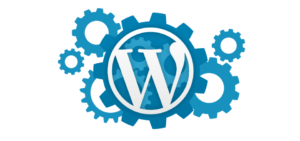WordPress is one of the most widely used content management systems (CMS) in the world. With its user-friendly interface and endless customization options, WordPress has become the go-to platform for bloggers, small business owners, and even large enterprises. However, as with any CMS, WordPress can become slow and cumbersome if the database is not optimized for speed and performance. In this blog post, we will explore various techniques to optimize your WordPress database and improve your website’s speed and performance.
What is WordPress Optimization?
WordPress optimization is the process of improving the speed, performance, and security of your WordPress website. A slow website can lead to a poor user experience, low search engine rankings, and ultimately, decreased traffic and revenue. Optimizing your WordPress website involves several steps, including:
Choosing a Fast and Reliable Hosting Provider: A fast and reliable hosting provider is the first step to optimizing your WordPress website. The server’s processing speed, memory, and disk space can have a significant impact on your website’s speed and performance.
Optimizing Your WordPress Theme and Plugins: The theme and plugins you use can also affect your website’s speed and performance. Choose lightweight and well-coded themes and plugins that do not slow down your website.
Caching: Caching is the process of storing frequently accessed data in memory or on disk, so it can be retrieved faster. WordPress caching plugins such as W3 Total Cache, WP Super Cache, or WP Rocket can significantly improve your website’s speed and performance.
Minimizing HTTP Requests: Reducing the number of HTTP requests made by your website can improve its speed and performance. You can achieve this by combining and minifying CSS and JavaScript files, using CSS sprites, and optimizing images.
Database Optimization: The database is the heart of your WordPress website. Optimizing your database can improve your website’s speed and performance, reduce its size, and prevent database errors.
In this blog post, we will focus on optimizing your WordPress database for speed and performance.
Why is Database Optimization Important?
The database is where all your website’s data is stored, including posts, pages, comments, users, and settings. As your website grows, the database can become cluttered with unnecessary data, making it slower and less efficient. Database optimization involves cleaning up your database, removing unnecessary data, and optimizing database tables and indexes.
Optimizing your database can have several benefits, including:
Improved Website Speed: A well-optimized database can improve your website’s speed by reducing the time it takes to retrieve data from the database.
Reduced Database Size: A large database can slow down your website and increase the time it takes to perform backups and updates. Optimizing your database can reduce its size and make it more manageable.
Prevented Database Errors: A poorly optimized database can lead to database errors, such as slow queries, database crashes, and data corruption. Optimizing your database can prevent these errors and ensure your website runs smoothly.
Improved Search Engine Rankings: Website speed is a ranking factor for search engines. Optimizing your database can improve your website’s speed, which can, in turn, improve your search engine rankings.
Now that we understand the importance of database optimization, let’s dive into some techniques to optimize your WordPress database for speed and performance.
- Backup Your Database
Before optimizing your database, it’s essential to create a backup. A backup will allow you to restore your database to its previous state in case something goes wrong during the optimization process. You can create a backup using a WordPress backup plugin, such as UpdraftPlus, BackupBuddy, or VaultPress, or by using your hosting provider’s backup service.
- Remove Unnecessary Data
Your WordPress database can accumulate unnecessary data over time, such as post revisions, spam
comments, deleted posts, and transients. Removing this data can significantly reduce the size of your database and improve its performance.
To remove unnecessary data, you can use plugins such as WP-Optimize, WP-Sweep, or Advanced Database Cleaner. These plugins can help you clean up your database by removing post revisions, spam comments, trashed posts, and other unnecessary data. Be sure to take a backup of your database before using any of these plugins.
- Optimize Database Tables
Optimizing your database tables can improve your website’s performance by reducing the time it takes to retrieve data from the database. You can optimize your database tables by running the OPTIMIZE TABLE command in phpMyAdmin or using a plugin such as WP-Optimize or WP-Sweep.
When you optimize a database table, MySQL reorganizes the data and frees up space, making the table more efficient. You should optimize your database tables regularly to keep your database running smoothly.
- Use Indexes
Indexes are data structures that improve the speed of data retrieval operations by providing quick access to data. When you run a query on a database table, MySQL scans the entire table to find the requested data. With an index, MySQL can quickly find the requested data without scanning the entire table.
You should create indexes on columns that are frequently used in queries, such as post_id, comment_id, and user_id. You can create indexes using phpMyAdmin or a plugin such as WP-DBManager or Jetpack.
- Disable or Remove Unused Plugins and Themes
Unused plugins and themes can slow down your website and increase the size of your database. You should disable or remove any unused plugins and themes to improve your website’s performance.
To disable a plugin, go to the Plugins page in the WordPress dashboard and click Deactivate next to the plugin you want to disable. To remove a plugin, click Delete instead of Deactivate.
To disable or remove a theme, go to the Appearance page in the WordPress dashboard and click the theme you want to disable or remove. Click the Deactivate button to disable the theme or the Delete button to remove it.
- Limit Post Revisions
WordPress automatically saves a copy of each post or page revision, which can increase the size of your database. You can limit the number of post revisions WordPress saves by adding the following code to your wp-config.php file:
define( ‘WP_POST_REVISIONS’, 3 );
This code limits the number of post revisions to three. You can change the number to any value you want.
- Use a Content Delivery Network (CDN)
A CDN is a network of servers located in different parts of the world that store a cached version of your website’s content. When a user requests your website, the CDN serves the cached content from the server closest to the user, reducing the time it takes to load your website.
You can use a CDN to serve static content, such as images, CSS, and JavaScript files. Some popular CDN services include Cloudflare, MaxCDN, and Amazon CloudFront.
Conclusion
Optimizing your WordPress database for speed and performance is essential for providing a good user experience, improving your search engine rankings, and increasing traffic and revenue. By following the techniques outlined in this blog post, you can optimize your database and improve your website’s speed and performance. Remember to always backup your database before making any changes, and regularly monitor your website’s performance to ensure it’s running smoothly.


